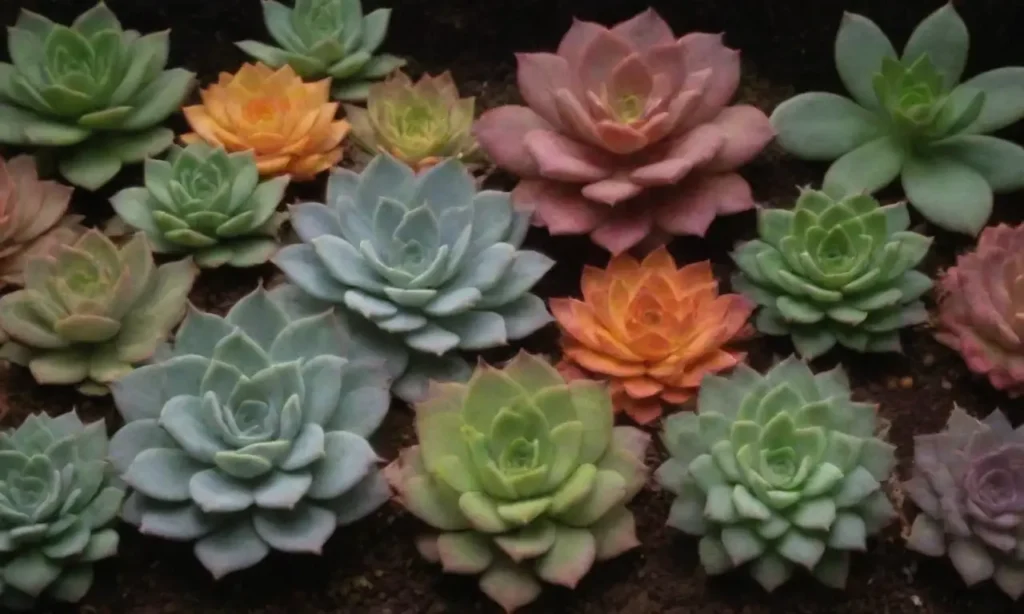
The Impact of Fertilization Timing on Succulent Propagation

Introduction
Succulent propagation is a popular and rewarding gardening practice for many enthusiasts and professionals alike. These unique plants, characterized by their thick, fleshy parts, are known for their ability to store water, making them resilient in arid conditions. With the rise of the urban gardening trend, many people are keen to learn about effective propagation techniques to grow healthy and thriving succulent collections. One of the most critical aspects of this process is the timing of fertilization, which can significantly influence the success and health of propagated succulents.
In this article, we will explore the intricacies of how fertilization timing impacts succulent propagation. We'll delve into the biological mechanisms at play, the type of fertilizers ideally suited for these plants, and the best practices for application. By understanding these factors, you can optimize your propagation techniques, leading to healthier plant growth and improved survival rates.
Understanding Succulent Biology
Succulents are adapted to store water in their leaves, stems, or roots, allowing them to survive in dry environments. Their specialized tissues, which include parenchyma cells, act as water reservoirs. This unique adaptation also affects their nutrient uptake and growth requirements. During the growing season, which varies by species but generally occurs in spring and summer, succulents actively photosynthesize and require more nutrients to support their growth processes.
The Role of Nutrients in Succulent Growth
The primary nutrients that succulents require include nitrogen, phosphorus, and potassium, often referred to as NPK. Nitrogen is crucial for leaf and stem development, phosphorus promotes root and flower growth, while potassium regulates various physiological processes. Aside from NPK, succulents also benefit from trace elements such as calcium, magnesium, and iron. Each nutrient plays a pivotal role, and timing the application of fertilizers correctly ensures that succulents receive these essential components when they need them most.
When propagating succulents, it's important to recognize that young plants typically have a limited root system, which can hinder their ability to absorb nutrients effectively. Therefore, providing optimal fertilizer timing can assist in promoting a robust root system early on in their developmental stage. Inadequate fertilization can lead to poor growth or even death in some cases, emphasizing the importance of careful timing.
Seasonal Changes and Fertilization Timing
Succulents exhibit unique growth patterns depending on the seasons. In spring, when temperatures begin to rise and sunlight increases, succulents generally enter their active growing phase. At this time, they benefit from increased fertilization, which can fuel their recovery from winter dormancy and support the development of new growth. Conversely, during late summer and fall, many succulents prepare to enter a dormant phase. Fertilizing during this period can divert energy away from root and leaf structure development, potentially leading to weakened plants.
Understanding these seasonal shifts is vital for propagation success. Propagators should adjust their fertilization practices based on the plant's current growth phase, allowing for a dynamic approach that aligns with the succulents' natural biological rhythms. Regularly assessing the condition of the plants, including leaf color, texture, and overall health, can further refine fertilization practices to align with the changing seasons.
 Common Mistakes to Avoid When Timing Succulent Propagation
Common Mistakes to Avoid When Timing Succulent PropagationTypes of Fertilizers Suitable for Succulent Propagation
Choosing the right type of fertilizer is crucial for succulent propagation. Not all fertilizers are created equal, and the choice depends on the specific needs of the plant, especially during the early stages of growth.
Liquid vs. Granular Fertilizers
Liquid fertilizers, such as water-soluble NPK solutions, are favored by many succulent growers for their rapid nutrient absorption capabilities. They can quickly deliver nutrients when the plants need them the most. This is particularly advantageous during the spring growing season when succulents are breaking dormancy and require a prompt nutrient boost. Liquid fertilizers should be applied at half-strength to prevent over-fertilization, which can harm sensitive succulent roots.
On the other hand, granular fertilizers offer a slow-release option, allowing sustained nutrient delivery over time. These fertilizers can be beneficial for established, healthy plants but are less ideal for delicate cuttings or seeds. When propagating succulents, it's essential to consider the plant's developmental stage and choose the fertilizer form accordingly. Avoiding over-fertilization is paramount, as this can lead to salt buildup in the soil, potentially harming the delicate root systems.
Organic vs. Synthetic Fertilizers
When selecting fertilizers, one must also decide between organic and synthetic options. Organic fertilizers, derived from natural sources like compost, fish emulsion, or seaweed, provide a range of nutrients along with beneficial microorganisms that enhance soil quality. The slow nutrient release from organic fertilizers makes them particularly suitable for new succulent growth, as it prevents nutrient burn and allows for gentle growth stimulation.
Conversely, synthetic fertilizers offer higher nutrient concentrations and immediate results. While effective, they can lead to rapid growth spurts that may compromise the overall structure and stability of young plants. For this reason, many succulent enthusiasts recommend incorporating organic fertilizers during the propagation and initial growth phases, transitioning to synthetics only after the plants have established themselves in their environment.
Best Practices for Fertilizing Propagated Succulents

To maximize the success of succulent propagation, it's crucial to implement best practices regarding fertilization timing. By adhering to a systematic approach, you can ensure that your succulents flourish in their new environment.
 Propagating Succulents Across Different Zones: A Timing Guide
Propagating Succulents Across Different Zones: A Timing GuideTiming Fertilization with Environmental Conditions
Monitoring environmental conditions is essential for determining the right time to fertilize your propagated succulents. The onset of warm weather signals that it's time to start applying fertilizer, as this is when succulents begin to exhibit signs of growth. Ideally, fertilization should begin in early spring, coinciding with increased daylight hours and rising temperatures.
Utilizing a regular schedule for fertilization, such as once every four to six weeks during the active growing season, can help maintain healthy plant nutrition. For those using liquid fertilizers, applying them after watering ensures that plants can absorb nutrients efficiently without damaging the delicate roots.
Observing Plant Indicators for Fertilization Needs
Observing your plants closely can provide insight into their nutrient needs. Healthy succulents typically exhibit vibrant color, firm textural quality, and consistent growth patterns. Should you notice signs of nutrient deficiency, such as pale leaves or stunted growth, it may be time to reassess your fertilization practices. Incorporating a fertilization log, where you document feeding patterns and plant responses, can help inform future decisions.
In addition to observation, consider providing nutrient-rich soil mixes designed specifically for succulents. These mixes can contain small amounts of fertilizers that steadily release nutrients and help establish a conducive environment for young plants. Consistency in soil quality plays a significant role in ensuring successful propagation.
Conclusion
In conclusion, fertilization timing is a pivotal aspect that profoundly impacts the success of succulent propagation. By understanding the unique biology of succulents, including their nutrient needs and seasonal growth patterns, you can develop effective propagation strategies that nurture the plants through their various life stages. The careful selection of appropriate fertilizers, whether liquid or granular, organic or synthetic, can further enhance the health and vitality of your succulent plants.
Adopting best practices in timing and monitoring plant health will set the foundation for a flourishing succulent collection. As with any gardening endeavor, patience and observation are essential; success often takes time and careful attention to detail. With a strategic approach toward fertilization timing, succulent propagation can become an engaging and fruitful pursuit, resulting in healthy, vibrant plants that bring joy and beauty to any space.
By harnessing the intricate relationship between fertilization and succulent growth, enthusiasts can explore the delightful world of propagation with greater confidence and enjoyment. Remember, every garden is unique, and your plants will inform you of their needs, guiding you to provide the best care possible for their thriving growth.
 Understanding Growth Hormones in Propagation Timing for Succulents
Understanding Growth Hormones in Propagation Timing for SucculentsIf you want to read more articles similar to The Impact of Fertilization Timing on Succulent Propagation, you can visit the Propagation Timing category.


You Must Read